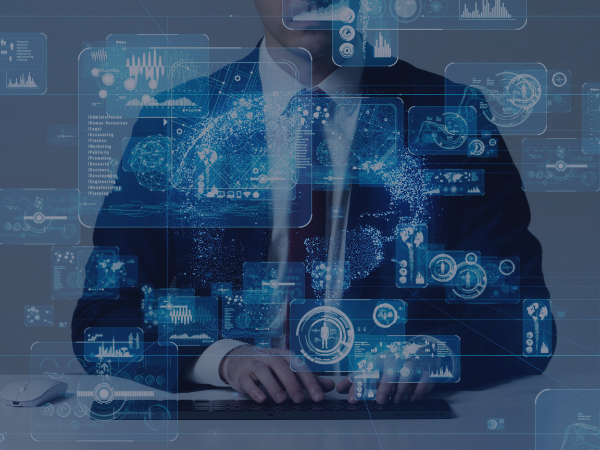How the Future of Workplaces Will Transform in the Next 10 Years

Contemporary business and technological trajectories indicate a profound transformation in how employees engage with work altering the paradigms of where, when, why, and with whom they work. This evolution, projected over the next decade, is poised to diverge significantly from the present work landscape. The ensuing six concepts delineate the prospective trajectory of the workplace and provide insights into how organizations can ready themselves for these forthcoming changes.
- Evolving Middle Management Roles
In today’s dynamic landscape, middle managers face a host of new challenges. With social and political upheaval, the blurring of work-life boundaries, and the advent of hybrid work arrangements, their responsibilities have become more intricate and demanding. Employees now have greater autonomy over where, when, and how they work, necessitating a shift in managerial focus. The conventional emphasis on performance evaluation has evolved. Successful middle managers are expected to excel as coaches and mentors, operating with empathy and adaptability. This adjustment reflects the changing needs of the workforce and the evolving nature of work itself.
- Emphasis on Upskilling and Digital Dexterity
The future of work places a premium on cognitive skills. Employees are increasingly required to apply creativity, critical thinking, and continuous digital upskilling to tackle intricate challenges. In the digital economy, innovation, new business models, and the rapid evolution of information are constants. As such, fostering a culture of continuous learning and knowledge sharing becomes paramount. HR departments are tasked with establishing an environment where learning and skill enhancement are integrated into everyday operations. This strategic shift prioritizes adaptability and digital proficiency over tenure and experience, aligning with the demands of a rapidly evolving business landscape.
- Expansion of Employee Data Collection
The rise of hybrid work arrangements has amplified interest in monitoring workplace productivity and employee well-being. Employers are increasingly turning to technology to track various aspects of employee performance, from virtual clocking in and out to monitoring digital communication and email usage. Some focus on productivity metrics, while others aim to gain a deeper understanding of employee engagement and overall well-being. This trend extends to using technology to gauge when employees require downtime, taking into account their biorhythms, nutritional needs, and exercise routines. The goal is to create a hybrid work environment that accommodates the diverse work styles of all employees, not just those with permanent roles or strong digital skills. Leveraging technology for this purpose underscores the evolving role of HR in ensuring the holistic well-being of the workforce.
- Integration of Smart Machines
Smart machines are rapidly advancing and becoming more pervasive in the workplace. They are not only handling tasks traditionally performed by humans but also venturing into areas previously deemed beyond their reach. Organizations are embracing these technologies to augment their operations. Employees are developing personalized toolkits comprising virtual counterparts and avatars, harnessing the power of artificial intelligence (AI) to enhance personal and team-based tasks. Moreover, cloud-based communities and personal virtual assistants are enabling individuals to carry their work environments with them. This shift towards extreme digital dexterity is reshaping how work is accomplished. Forward-thinking leaders are exploring the integration of AI, smart software, and robots to enhance work strategies and create a competitive edge. High-performing employees are encouraged to develop and share AI tools and customized portfolios of applications and smart technology, driving a culture of digital innovation.
- The Shift Toward Purpose and Passion in Work
Employees are increasingly motivated by a desire to create a positive social impact through their work. This drive for purpose and meaning extends beyond financial considerations, and individuals are actively seeking opportunities to align their work with their personal missions and passions. Social media exposure to the efforts of others serves as a catalyst for greater involvement in social innovation and equity initiatives. Forward-thinking companies are recognizing that attracting top talent requires more than just competitive salaries; they are also providing avenues for employees to make a meaningful impact. By facilitating initiatives where employees can share personal stories, experiences, and successes related to social causes, organizations can foster engagement and create a message that resonates with their workforce.
- The Evolving Landscape of Remote Work-Life Balance
As remote work becomes more prevalent, employees working independently or from distant locations face a new set of challenges. While they may take on additional assignments to enhance their skills and tackle more complex projects, there is a growing concern about work-life balance. Employees are increasingly prioritizing their personal lives over an endless work cycle. However, the transformation of work dynamics and the dispersion of employees raise concerns about strained relationships and organizational culture. The absence of in-person interactions can lead to disengagement and feelings of isolation among remote workers. CEOs and HR leaders need to collaborate to address these evolving challenges and ensure that work-life balance remains adaptable to the changing needs and life stages of each employee. A proactive approach to forecasting future work dynamics will empower HR leaders to navigate these complexities more effectively.
In summary, the accelerated changes in work patterns brought by the pandemic have reshaped the future of work. To foster innovation, inclusivity, and insightfulness, organizations must strategically rethink how work is approached, considering these six anticipated shifts in the workplace over the next decade.




